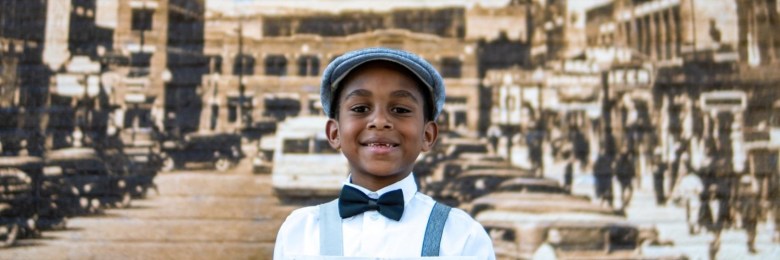Urban landscapes in America are adorned with vibrant neighborhoods that have played pivotal roles in shaping the nation’s cultural history. Among these, Black neighborhoods stand out as beacons of resilience, creativity, and community. While the trend has continued to gain popularity and support the idea of urban exploration has been a popular social media trend for a number of years. Online explorers have been sharing videos of their walks and ours and discoveries and the appeal and draw is bubbling over into the Black community now as well.
This article explores the rich history and contemporary culture of significant Black neighborhoods in urban areas, celebrating their contributions to the broader American experience. Join us as we look at how Black culture is rediscovering and reclaiming its roots as we look at some of the biggest historic black neighborhoods.
Harlem, New York: The Cultural Mecca of the Harlem Renaissance
Harlem, nestled in the northern part of Manhattan, stands as a testament to the artistic and intellectual prowess of the Black community.During the Harlem Renaissance of the 1920s and 1930s, this neighborhood became a cultural mecca, witnessing an explosion of artistic expression in literature, music, and visual arts.
“Not many people realize that the name Harlem originates from the Dutch name Haarlem. Before evolving into the epicenter of African-American culture and art that Harlem, New York is known as today, it was originally a Dutch village founded in 1658,” according to The Tewel Team. Today, Harlem continues to be a vibrant hub of artistic innovation. Its streets are lined with jazz clubs, theaters, and galleries, and the spirit of the Harlem Renaissance lives on in cultural institutions like the Apollo Theater. The neighborhood’s rich history is visible in its brownstone architecture and is a source of inspiration for a new generation of artists and activists.
Bronzeville, Chicago: The Black Metropolis
Bronzeville, located on the South Side of Chicago, earned the moniker “Black Metropolis” for its historical significance as a center of Black culture, business, and politics. “Bronzeville was once home to Pulitzer Prize-winning poet Gwendolyn Brooks, civil rights activist Ida B. Wells, legendary musician Louis Armstrong, and more,” as noted by Choose Chicago.
During the Great Migration, thousands of African Americans moved to Bronzeville, creating a vibrant community that produced influential figures such as Gwendolyn Brooks, the first Black Pulitzer Prize-winning poet. In the mid-20th century, Bronzeville faced challenges, including disinvestment and social unrest. However, recent revitalization efforts have breathed new life into the neighborhood.
Leimert Park, Los Angeles: A Cultural Oasis
Leimert Park, situated in the heart of Los Angeles, is a cultural oasis that has long been a haven for Black artists, musicians, and intellectuals. In the 20th century, the area became a focal point for jazz and blues, hosting legendary performers like Billy Higgins and Art Davis.
Today, Leimert Park continues to be a thriving cultural center, with the World Stage serving as a hub for jazz and poetry that reflect the diversity of the Black experience.
Community-driven initiatives, such as the Leimert Park Art Walk and the annual Day of the Ancestors: Festival of Masks, contribute to the neighborhood’s vibrant cultural scene. “Named after its developer, Walter H. Leimert, Leimert Park was developed in 1928 and designed by Olmsted Brothers. Leimert Park would serve low- and middle-income family homes in one of Los Angeles’ first planned communities. For its time, it was considered a model of urban planning,” noted by the National Park Service.
Bedford-Stuyvesant, Brooklyn: The Historic Heart of Brooklyn’s Black Community
Affectionately known as Bed-Stuy, Bedford-Stuyvesant in Brooklyn has been a historic heart of New York City’s Black community. During the 20th century, it played a crucial role in the Civil Rights Movement. It was home to iconic figures like Shirley Chisholm, the first Black woman elected to the United States Congress. It has been noted that “Bedford–Stuyvesant has the largest collection of intact and largely untouched Victorian architecture in the United States, with roughly 8,800 buildings built before 1900. Its building stock includes many historic brownstones.”
Bed-Stuy is renowned for its brownstone architecture and lively street life, with a strong sense of community evident in local businesses and cultural institutions. The neighborhood’s rich history is celebrated in events like the RestorationART Annual Holiday Marketplace, highlighting local artists and entrepreneurs’ talents.
Black Neighborhoods- The Power of Cultural Longevity
These significant Black neighborhoods in urban America reflect the resilience, creativity, and community spirit within the Black community. From the historical Harlem Renaissance to the contemporary Renaissance in neighborhoods like Leimert Park, these areas have been and continue to be crucibles of cultural innovation and empowerment.
As we navigate the present and envision the future, it is essential to honor and celebrate the profound contributions of these neighborhoods to the cultural mosaic of the United States. The past has shaped the Black community into what it is today- something to be treasured, shared, and proud of!

